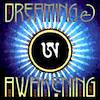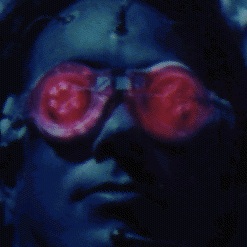|
|
|
Welcome to LUCIDITY*FLASHES, The Lucidity Institute’s e-newsletter of events and information on lucid dreaming and related states of consciousness.
Not sure exactly what lucid dreaming means? That would be what you’d be doing right now if this were a dream, and you knew that you knew it.
Oddly enough, we don’t usually notice that we have been dreaming until after we wake up. This is probably because we don’t normally sleep with the intention of noticing that we are dreaming while we are still doing so. That is to say, we forget to remember to be consciously present, “awake” to our dreams. We sleep-walk through much of our lives, and unless we remember to do otherwise, sleep in our sleep. What better day than TODAY to begin sleeping with awareness, and awakening in our dreams?
What’s in This Issue (First Quarter, 2014)
* “SLEEP IS THE BEST MEDITATION.” — HH The Dalai Lama
Where Lucid Dream Yoga starts: Awake in your sleep: What do you know when you know you’re asleep?
* DREAMING AND AWAKENING: Kalani Oceanside Retreat, Hawaii
Inner exploration, mindfulness enhancement, and fun with Stephen LaBerge and friends.
Click here for information on our next workshop: May 2-10, 2015.
* LUCID DREAMING INDUCTION: The State of the Art 2014
We have been teaching people to voluntarily induce lucid dreams for more than 25 years. How accessible IS lucid dreaming today?
*INTRODUCING N2D2: The Next Generation of Lucid Dream Induction Devices.
|
“SLEEP IS THE BEST MEDITATION.”
— HH The Dalai Lama
Where Lucid Dream Yoga starts: Awake in your sleep?
Becoming mindful of sleep sounds contradictory. How can you sleep at all, if your mind is active?
How can you be asleep if you are being mindful of anything, and especially mindful of what you are supposed to be doing: nothing? Isn’t that what being asleep means? Indeed, in both folk psychology (the informal psychology of popular conception, or misconception) and conventional cognitive sleep psychology it is widely assumed that sleep is inconsistent with mindfulness or reflective thought. However, conventional thought is mistaken in presuming that you can’t be asleep and at the same time reflectively conscious or mindful. Of course, lucid dreaming is an obvious counter-example showing fully reflective consciousness during unequivocal (REM) sleep. (See LaBerge 1990 for details.)
But why doesn’t mindfulness of sleep (or dreaming) wake you up? The quality of mind cultivated in sleep and dream yoga, and referred to in the quote above as “the best meditation” is a delicate, unobtrusive, and non-attached awareness of whatever is happening now. By its non-judgmental nature mindfulness is unlikely to cause arousal. This is the state of mind that must be developed by those interested in learning how to directly and consciously enter the dream state, a procedure known as Wake-Initiated Lucid Dreaming (or “WILD”), one of several methods of lucid dream induction we teach at the DAA program.
It is also possible to be metaconscious of being asleep, and NOT dreaming. This is one of the sleep yoga goals and sometimes occurs following WILD procedures. Dreamless sleep, consciously experienced: Perhaps a way to die daily and still wake up in the morning. For a little more on the significance of this state please have a look at this 4 minute video:
LaBerge2011-ConsciousOfNothingButBeingAsleep.mp4
|
 DREAMING AND AWAKENING
with Stephen LaBerge, Ph.D
Next workshop: May 2-10, 2015
Kalani Oceanside Retreat, Hawaii
In potential, the dream state offers the highest degree of freedom from external constraint, and perhaps the highest degree of power, yet to convert this potential into reality, we must be lucid. Otherwise, to sleep we give our powers away. It is as if we play the role of a minor character in a second-rate soap-opera, and while we dream our way through this quotidian shadow-show, we believe that the role we play is who we are, and remember nothing more. Wake up and join us in Hawaii!
Becoming adept at lucid dreaming requires practice with effective techniques and a degree of focused attention difficult to maintain during our busy lives. This program provides an ideal opportunity to nurture lucid dreaming abilities and enhance mindfulness in daily life.
Suitable for all levels of experience, our program will feature group and individual exercises for developing awareness skills and valuable insights into the application of lucidity; a sleep schedule optimized for the promotion of lucid dreams; use of lucid dream induction technology including the new NovaDreamer2, (and for the lucky beta-few, N2D2) and (optional) use of a natural substance that our research has shown to be an effective promotor of dream recall and lucidity; discussion sessions and personal guidance. Over the more than 20 years of offering this program, we have found that most participants, regardless of whether or not they have had a lucid dream in the past, will succeed in having at least one during the program.
Discussion topics include: Learning how to dream more lucidly; inducing, stabilizing, and guiding lucid dreams; dream control: freedom, flexibility, and choice; brain and mind science of sleep, dreaming, and waking; lucid dream work: from nightmares to wholeness; dream ego, shadow, and self-integration; Dreaming, Illusion and Virtual Reality; physical body, body-image, and OBEs; Dreams within dreams, shared dreams, and false awakenings; consciousness as a model of self and world: Dreaming, Death and Transcendence; Tibetan Dream Yoga; identity: personal and transpersonal; Life as a dream quest: Awakening in your Dreams and in your Life; Inception: after extensive reality testing, we conclude it’s just a movie!
See website for registration fees. Special rates are available for alumni, groups of 3 or more, and where appropriate, Kama’aina discounts.
Scholarships are available for this program, but space is limited. If you would like to attend, but cannot afford the standard fee, please complete the online application form. We’ll do our best to work out a way for you to join us.
For program details (including testimonials from previous participants) and online registration, please visit our website.
|
LUCID DREAMING INDUCTION:
The State of the Art 2014
We have been teaching people to voluntarily induce lucid dreams for more than 25 years. How accessible IS lucid dreaming today?
If you want to induce a lucid dream, you’ll need one or two things, depending on how you count. Most simply put, the minimum necessary requirements might be having a brain and knowing how to use it. Or more precisely, you’ll need 1) a prepared mind and 2) an activated brain. The prepared mind means sleeping with the intention to remember to notice the next time you’re dreaming by recognizing dreamsigns, or simply remembering to remember. Secondly, our laboratory research
shows that a sufficiently elevated level of central nervous system activation is necessary for the occurrence of lucid dreams. Evidently, the high level of metacognitive function involved in lucid dreaming requires a corresponding level of neuronal activation high enough to activate the pre-sleep intention to recognize that you are dreaming. This level of cortical and metacognitive activation is only attained in the most intensified form of sleep: “phasic” REM.
By optimizing these two requirements for lucid dreaming, we are able to achieve the best results. What kind of success rate can you expect to achieve following this approach? The best experimental data we have on the question comes from past DAA
programs in which we do whatever can be conveniently and productively done to give the best results. Mindset is optimized via meditation practice, yoga nidra, excercises strengthening prospective memory, understanding dreamsigns, and practicing MILD (Mnemonic Induction of Lucid Dreaming); and (optional) use of NovaDreamer2s that provide memory cues. Brain activation is optimized by a variety of techniques including sleep interruption, and (optional) REM intensification by cholinergic supplementation. Data from 6 of the most recent DAA programs was available for analysis; 102 of 124 attendees reported having at least one lucid dream during the week (82%). These participants reported an average of 3-5 lucid dreams per year which is equivalent to about 1 every 90 nights, giving an estimated nightly probability of lucid dreaming of about 1%. During the last part of the weeklong program we
collected data on three nights in which mental set was maximized and physiological intensification was varied, showing increases over the baseline lucid dreaming probability by between 10-40 times.
So how accessible IS lucid dreaming today? We ask on one of our questionnaires for DAA, how likely would you be to have a lucid dream tonight if you decided you wanted to have one? Some oneironauts we know can answer “nearly 100%”. But for the average person interested in lucid dreaming after several days of instruction plus a little brain-tweaking, the answer is likely to be “about 80% certain.”
|
 NOVADREAMER2 UPDATE:
The Next Generation of Lucid Dream Induction Devices
Codename: “N2D2”
If you don’t know what a NovaDreamer is, think of it as an electronic nudge when you are in REM sleep and dreaming, to remind you that you are, in fact, dreaming.
The NovaDreamer has been superceded by a new, improved version (NovaDreamer2, ND2). Hundreds of Dreaming and Awakening retreat participants have helped us test and refine the latest prototypes of ND2 over the past 5 years. The basic concept of providing cues in REM sleep has been proven effective in helping beginners to get a head start on learning the skill of lucid dreaming, as well as allowing more advanced oneironauts easier access. Our focus has been on refining the technology to create a device that is simple, elegant, effective and affordable. Happily, technological innovations have steamed ahead, allowing us to incorporate powerful REM detection algorithms and interactive user-friendly capabilities in the most cost-effective, smartest dream device yet available.
The end result is that N2D2 is more like the original DreamLight, the $1200 device released in the 1990s, which, because it had a larger processing unit than the later Nova Dreamer, had greater programming flexibility and ability to store data. It was also easier to use than the less expensive NovaDreamer. With the latest personal computing technology, we can now offer DreamLight level (and well beyond...) sophistication for approximately a tenth of the cost to you. The N2D2 will allow you to personalize your settings, download and view your results, and refine your settings for optimal effectiveness. An add-on feature will allow you to download your dreams directly allowing you to dispense with inconvenient “dream reports.” (Reality Testing must be provided by user.)
As we work on finishing the software for the N2D2, you, the oneironauts, can help the process in two ways. First, we would like to gather data on what type of devices you own and would like to use with your N2D2. Some of you may have filled out a questionnaire last year about the ND2. However, additional information is needed at this point, so please also fill out this new N2D2 questionnaire if you are still interested in being one of the first to use an N2D2. We plan to manufacture small production runs based on likely orders, so the devices will initially be in very short supply.
Secondly, we are seeking beta-testers. Beta-testers will have the first chance to use (and own) the N2D2, a wholly redesigned approach to lucid dream induction. Details on qualifying criteria for beta-testing will be forthcoming in the near future.
If you are interested in getting an N2D2 in the near future, make sure you fill out the 2-3 minute n2d2survey.
|
|
|
|